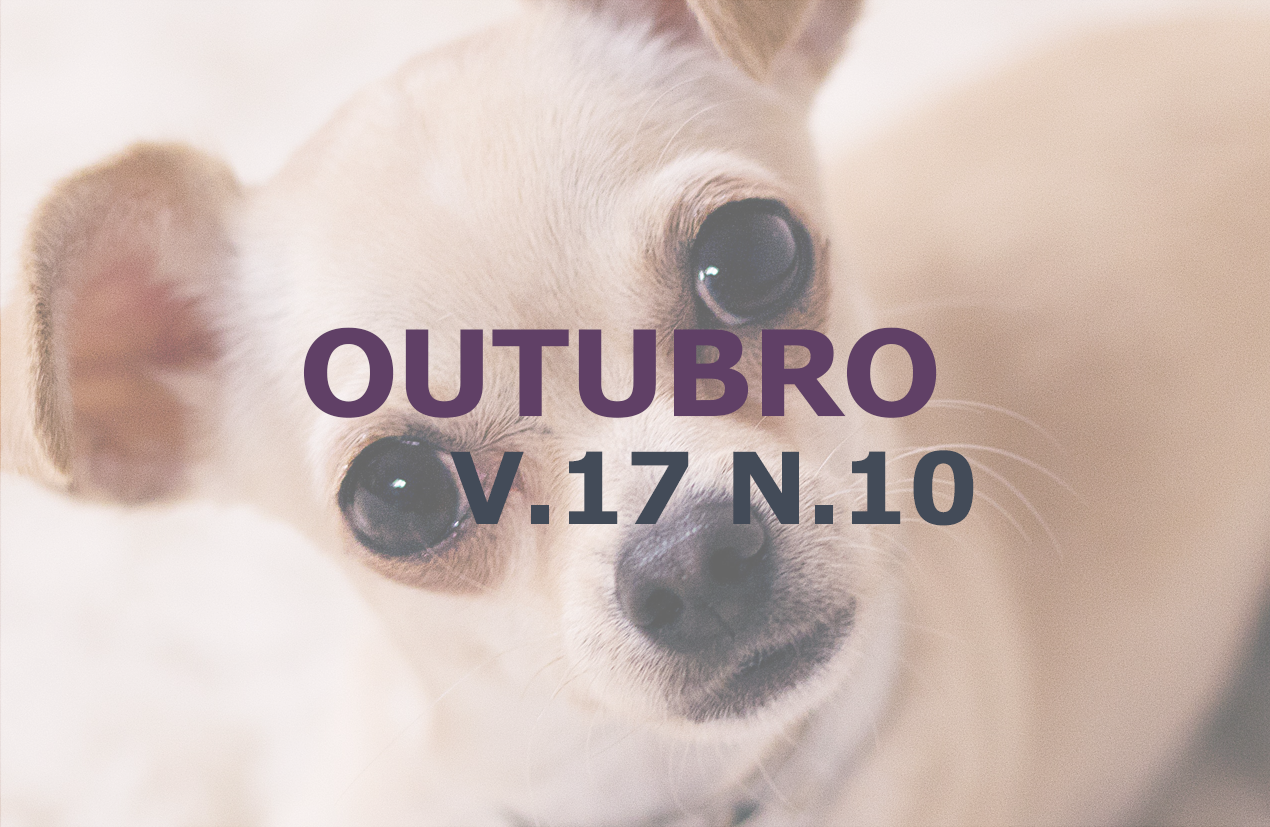Is Epidural technique using bupivacaine associated with morphine in a bitch submitted to ovariohysterectomy and excisional biopsy of a nodule in the vulva: Case report
DOI:
https://doi.org/10.31533/pubvet.v17n10e1467Keywords:
anesthesia, local block, dog, epidural, ovariohysterectomyAbstract
Locoregional techniques are considered an increment for general anesthesia, since they promote efficient analgesia in the intraoperative period, resulting in a decrease in the dose of general anesthetics utilized, and of analgesic rescue in the postoperative period. This report aims to evaluate the effects of an anesthetic protocol, aiming to observe the physiological variables, duration and quality of anesthesia, in a bitch submitted to ovariohysterectomy and excisional biopsy of a nodule in the vulva, with acepromazine and methadone as premedication, propofol as the anesthesia inducing agent combined with epidural associations of bupivacaine-morphine. The patient was seen at the Veterinary Hospital with complaints of a nodule in the vulvar region with evolution of growth for 1 year. The patient was then referred to the surgery department for ovariohysterectomy and excisional biopsy of the nodule in the vulvar region. Therefore, it is concluded that the technique that uses morphine associated with bupivacaine is recommended for ovariohysterectomy and soft tissue surgery, as it presents nociceptive blockade, relaxation, and results in greater comfort for the animal during the trans- and post-operative periods.
References
Crevecoeur, A., & Barouk, D. (2010). Anestesia locorregional. EMC-Tratado de Medicina, 14(2), 1–8.
Duke-Novakovski, T. (2014). Opioids. In C. M. Egger, L. Love, & T. Doherty (Eds.). Pain management in veterinary practice. Wiley-Blackwell, Hoboken, New Jersey, EUA. Willey-Blackwell, Hoboken.
Fantoni, D. T., & Cortopassi, S. R. G. (2009). Anestesia em cães e gatos. Roca.
Fossum, T. W. (2021). Cirurgia de pequenos animais (3ed.). Elsevier Editora.
Fragata, F. S., & Imagawa, V. I. (2008). Analgesia na terapia intensiva. In M. M. Santos & F. S. Fragata (Eds.). Emergência e terapia intensiva veterinária em pequenos animais: Bases para o atendimento hospitalar (pp. 817–836). Roca, São Paulo.
Gaynor, J. S., & Muir, W. W. (2009). Manual de controle da dor em medicina veterinária (Vol. 1). MedVet.
Grond, S., Radbruch, L., & Lehmann, K. A. (2000). Clinical pharmacokinetics of transdermal opioids: focus on transdermal fentanyl. Clinical Pharmacokinetics, 38, 59–89.
Klaumann, P. R., & Otero, P. E. (2013). Anestesia locorregional em pequenos animais. Roca, São Paulo.
Luna, S. P. L. (1998). Anestesias perineurais e regionais em equinos. Revista de Educação Continuada em Medicina Veterinária e Zootecnia do CRMV-SP, 1(1), 24–30.
Massone, F. (2017). Anestesiologia veterinária. In Farmacologia e técnicas. Guanabara Koogan.
Muir, W. W., & Hubbell, J. A. E. (2001). Manual de anestesia veterinária. Artmed Editora.
Otero, P. E., & Portela, D. A. (2018). Manual de anestesia regional em animais de estimação. Med Vet Livros.
Spinosa, H. S. S., Górniak, S. L., & Bernardi, M. M. (2017). Farmacologia aplicada à medicina veterinária. Koogan Guanabara.
Thrall, M. A., Weiser, G., Allison, R. W., & Campbell, T. W. (2022). Veterinary hematology, clinical chemistry, and cytology. John Wiley & Sons.
Torske, K. E., & Dyson, D. H. (2000). Epidural analgesia and anesthesia. Veterinary Clinics: Small Animal Practice, 30(4), 859–874. https://doi.org/10.1016/B978-0-323-06524-5.00067-2.
Urban, M. K., & Urquhart, B. (1994). Evaluation of brachial plexus anesthesia for upper extremity surgery. Regional Anesthesia and Pain Medicine, 19(3), 175–182.
Urquhart, G. M., Armour, J., Dunn, A. M., & Jennings, F. W. (1998). Parasitologia veterinária (2nd ed.). Guanabara Koogan.
Downloads
Published
Issue
Section
License
Copyright (c) 2023 Samuel Cincotto rosa

This work is licensed under a Creative Commons Attribution 4.0 International License.
Você tem o direito de:
Compartilhar — copiar e redistribuir o material em qualquer suporte ou formato
Adaptar — remixar, transformar, e criar a partir do material para qualquer fim, mesmo que comercial.
O licenciante não pode revogar estes direitos desde que você respeite os termos da licença. De acordo com os termos seguintes:
Atribuição
— Você deve dar o crédito apropriado, prover um link para a licença e indicar se mudanças foram feitas. Você deve fazê-lo em qualquer circunstância razoável, mas de nenhuma maneira que sugira que o licenciante apoia você ou o seu uso. Sem restrições adicionais
— Você não pode aplicar termos jurídicos ou medidas de caráter tecnológico que restrinjam legalmente outros de fazerem algo que a licença permita.





